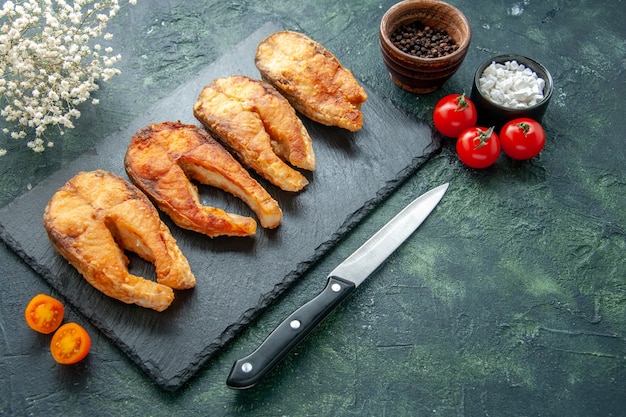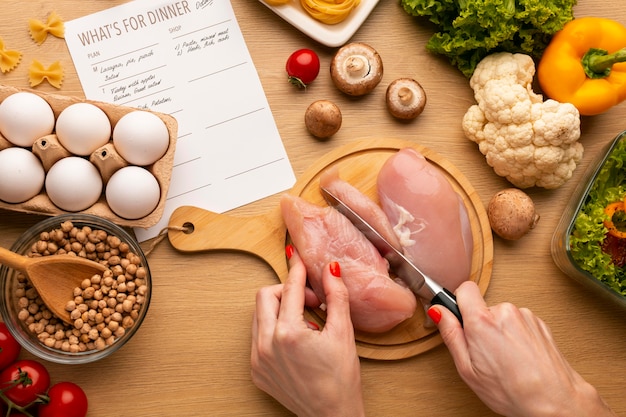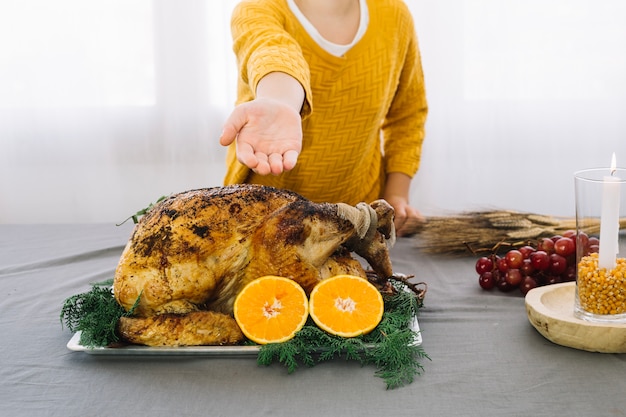Let's face it, we've all been there: staring at a chicken breast, wondering how long it needs to bake in the oven at 425°F to achieve that perfect balance of juicy tenderness and crispy skin. It's a recipe for culinary anxiety, especially when you're picturing the dreaded dry, rubbery chicken breast that nobody wants to eat. But fear not, my fellow chicken enthusiasts! I'm about to share my secrets to conquering the 425°F chicken breast challenge. You'll be surprised at how simple it is, and you'll be even more delighted by the delicious results.
Part 1: The 425°F Conundrum - Why the High Heat?

First, let's address the elephant in the room: why even cook chicken breast at 425°F? It's a bold move, like wearing a bright red outfit to a formal event – it's got the potential to be fantastic, but it requires a certain level of confidence and finesse. Why choose this high temperature when you can bake at a more traditional 350°F? Well, it's all about the payoff.
The Perks of High-Heat Cooking
Here's the deal: cooking a chicken breast at 425°F gives you two major benefits.
- Crispy Skin Perfection: High heat is the key to achieving that irresistible, crispy skin. Who doesn't love a perfectly golden-brown, crackly outer layer that adds a delightful textural contrast to the juicy meat inside?
- Speed Demon: 425°F is a fast track to a cooked chicken breast, which is a lifesaver when you're juggling other culinary tasks or just short on time. It's like having a turbocharged oven that gets things done quickly without sacrificing quality (if you do it right, of course!).
But, let's be real: cooking at 425°F is a bit like riding a rollercoaster. It's exhilarating, but you need to keep a firm grip to avoid getting tossed around. If you're not careful, you'll end up with a dry, tough chicken breast that's more like a rubber band than a culinary delight. But don't worry, I'll guide you through the twists and turns, ensuring a smooth and delicious journey.
Part 2: Your New Best Friend: The Oven Thermometer

The foundation of successful 425°F chicken breast cooking is understanding the temperature of your oven. This is where your trusty oven thermometer steps in. You might be surprised, but even the most modern ovens can fluctuate in temperature. Just like your car's speedometer might be slightly off, your oven's internal temperature gauge can be a little unreliable.
Unveiling the Truth About Your Oven's Temperature
Imagine this: You set your oven to 425°F, confident that you're on the right track. But in reality, your oven is only reaching 410°F, a subtle difference that can have a significant impact on the outcome of your chicken. That 15°F discrepancy can make the difference between a perfectly cooked, juicy chicken breast and a dry, overcooked one.
So, before you dive headfirst into the 425°F chicken breast game, invest in an oven thermometer – it's a game-changer! It's like having a personal bodyguard for your chicken, ensuring that it's cooked to perfection at the exact temperature you want. Trust me, it's a small investment that delivers big rewards.
Part 3: The Science Behind Perfect Chicken Breast

Let's dive into the science behind this culinary challenge. Chicken breast is a lean cut of meat, which means it's naturally low in moisture. This makes it susceptible to dryness when cooked at high temperatures. The key is to find that sweet spot: cooking it through to ensure safety and tenderness while avoiding overcooking that leads to a rubbery texture.
The Magic Number: 165°F
The golden standard for internal temperature of cooked chicken is 165°F. This temperature ensures that the chicken is thoroughly cooked, killing any harmful bacteria, without overdoing it. It's like hitting that perfect sweet spot in a rollercoaster ride: exciting and safe.
Now, you might be thinking: "How on earth do I reach that magical 165°F?" Simple: your trusty meat thermometer! This handy tool is a must-have for every kitchen arsenal, allowing you to take the temperature of your chicken breast at any stage of the cooking process. Think of it as a culinary compass guiding you to the perfect internal temperature.
Part 4: Mastering the Time Factor: A chicken breast guide
Alright, so we've covered the temperature aspect. Now, let's talk about the other key player: time. Knowing how long to cook your chicken breast at 425°F is like knowing the timing of a perfect comedic punchline. It's all about delivery.
chicken breast size and cooking time
While there's no one-size-fits-all answer, here's a general guideline for cooking chicken breasts at 425°F:
| Chicken Breast Size | Cooking Time at 425°F |
|---|---|
| 4-6 ounces | 15-20 minutes |
| 6-8 ounces | 20-25 minutes |
| 8-10 ounces | 25-30 minutes |
Remember, these are just starting points. Your chicken breast's thickness, your oven's temperament, and even the size of your baking dish can affect the cooking time. Always keep a close eye on your chicken breast, and don't be afraid to check the internal temperature with your trusty meat thermometer.
Think of it like a culinary detective: you're gathering clues (visual cues, touch, and internal temperature) to solve the mystery of perfect chicken breast cook time.
Part 5: Elevating the Experience: The Baking Dish
The baking dish isn't just a vessel; it's a collaborator in your chicken breast cooking adventure. It's the stage where your culinary masterpiece takes center stage. The size and material of your baking dish play a crucial role in the outcome of your chicken.
Choosing the Right Size
Just as you wouldn't try to squeeze a large family into a tiny car, you shouldn't overcrowd your chicken breast. The baking dish should be big enough to accommodate the chicken breast without it being cramped. If you're cooking multiple breasts, make sure they're not touching each other. This allows for even heat distribution and prevents steaming, ensuring that your chicken breasts cook beautifully.
Imagine your baking dish as a cozy cabin for your chicken breast. It needs enough space to relax and cook evenly, without feeling cramped or overwhelmed.
Material Matters: Glass, Metal, or Ceramic?
The material of your baking dish can make a difference too. Glass and metal dishes tend to heat up quickly, which can lead to uneven cooking. If you're using one of these, preheat it for a few minutes before adding the chicken. This will help ensure that the chicken cooks evenly.
Ceramic baking dishes are a good alternative because they heat up more slowly and evenly. Think of them as the calming presence in the kitchen, providing consistent warmth for your chicken breast.
Part 6: The Roasting Rack: Your Chicken's Personal Platform
Now, let's talk about the roasting rack – the chicken breast's own personal platform. It's not just a fancy accessory; it's essential for achieving that juicy, evenly cooked result. Think of it as a stage for your culinary star.
Circulation is Key
A roasting rack allows air to circulate around the chicken breast, preventing it from steaming and ensuring even cooking. Without it, the chicken breast will essentially steam itself, resulting in a soggy, unappetizing texture. Imagine a sauna for your chicken, not exactly ideal for a delicious outcome.
Size Matters: A Roomy Platform
Make sure the roasting rack is big enough to hold the chicken breast without it touching the bottom of the baking dish. If you're cooking multiple breasts, ensure they're not touching each other. This will prevent steaming and allow for even cooking on all sides.
The roasting rack creates a perfect space for the chicken breast to bask in the heat, achieving that golden-brown exterior and juicy, tender interior.
Part 7: The Flavor Revolution: Seasoning and Beyond
Now, you might be thinking: "Okay, so I've got the perfect baking dish, the roasting rack, and I know how long to cook it. But how do I make it truly amazing? How do I create a chicken breast that sings with flavor?". This is where your creativity kicks in.
The Classics: Salt, Pepper, and More
Start with the basics: salt and pepper. These two simple ingredients are like the foundation of a great house: they bring out the natural flavors of the chicken. Then, get creative with herbs and spices. Some of my favorites include:
- Garlic powder: Adds a subtle depth of flavor and aroma.
- Onion powder: A warm, savory addition that complements the chicken beautifully.
- Paprika: Offers a touch of sweetness and a vibrant color.
- Oregano: Adds a classic, earthy flavor that's perfect for Mediterranean-inspired dishes.
- Thyme: A versatile herb that complements chicken beautifully with its earthy, slightly citrusy aroma.
Don't be afraid to mix and match herbs and spices to create your own unique blends. For example, try a combination of rosemary, garlic, and lemon zest for a vibrant Mediterranean touch.
Going Beyond the Basics: Flavorful Upgrades
But, if you're feeling adventurous, go beyond the basics! You can add even more flavor by incorporating other ingredients into your chicken breast.
- Stuffing: Combine a mixture of lemon, herbs, and breadcrumbs and stuff it into the chicken breast for a flavorful surprise.
- Bacon Wrap: Wrap your chicken breast in crispy bacon for a savory, salty indulgence.
- Marinades: Soak your chicken breast in a flavorful marinade for hours before cooking, allowing the flavors to penetrate deeply for maximum deliciousness.
The possibilities are endless! Just remember to cook the chicken breast until it reaches 165°F, no matter how much flavor you add.
Part 8: The Resting Period: A Crucial Step
After you pull your chicken breast from the oven, resist the urge to slice into it right away. It's like letting a freshly baked cake cool before slicing; it allows the flavors to meld and the juices to redistribute.
Why Resting is Essential
Think of it this way: when you cook chicken breast, the heat pushes the juices towards the center. Slicing it immediately releases those precious juices, leaving you with dry, tough chicken. But by letting it rest for 10-15 minutes, you allow the juices to redistribute throughout the meat, resulting in a juicier, more flavorful chicken breast. It's like giving your chicken breast a chance to relax and breathe after a culinary workout.
Part 9: Finishing Touches: Sides and Sauces
Now, you've created the perfect chicken breast: juicy, flavorful, and cooked to perfection. It's time to make it a complete culinary experience with delicious sides and sauces.
Delicious Pairings: Sides that Compliment
Here are a few side dish ideas that complement chicken breast beautifully:
- Roasted Vegetables: Embrace the seasonality with roasted vegetables like asparagus, Brussels sprouts, or carrots.
- mashed potatoes: A classic comfort food pairing that adds creamy richness to your meal.
- Rice: A versatile blank canvas that absorbs the flavors of your chicken and sauces.
- Salad: For a lighter touch, add a refreshing salad with a vibrant vinaigrette.
Sauce It Up: Flavorful Enhancements
And, of course, no chicken breast is complete without a delightful sauce. Here are a few ideas to elevate your chicken to new heights:
- Lemon Butter Sauce: A classic and simple sauce that adds a bright, tangy flavor.
- Mushroom Sauce: A rich and savory sauce that pairs beautifully with chicken.
- Garlic Herb Sauce: A flavorful and aromatic sauce that adds a touch of sophistication.
Don't be afraid to experiment with different sauces, adding your own personal touch to your chicken breast culinary masterpiece.
Part 10: FAQs
1. How do I know when my chicken breast is cooked through?
The best way to check if your chicken breast is cooked through is to use a meat thermometer. It should reach an internal temperature of 165°F. You can also check for doneness by pressing on the chicken: if it feels firm to the touch, it's cooked through.
2. Can I overcook chicken breast at 425°F?
Absolutely. Overcooking is a real risk when cooking at high temperatures. Keep a close eye on the cooking time, and use your meat thermometer to ensure that your chicken doesn't get overcooked.
3. Can I cook chicken breast at 425°F without a roasting rack?
Yes, but it's not ideal. A roasting rack ensures even cooking and prevents steaming. If you don't have a roasting rack, place the chicken breast on a bed of vegetables like onions, carrots, or potatoes. This will lift it off the bottom of the baking dish, allowing for air circulation.
4. What's the best way to reheat cooked chicken breast?
The best way to reheat cooked chicken breast is in the oven at 350°F for 15-20 minutes, or until it's heated through. You can also reheat it in the microwave, but it can tend to dry out the chicken.
5. What are some creative ways to use leftover chicken breast?
The possibilities are endless! Use leftover chicken breast in salads, sandwiches, stir-fries, pasta dishes, soups, and more. Just make sure it's reheated to an internal temperature of 165°F before eating.
And there you have it! You now possess the knowledge and confidence to conquer the 425°F chicken breast challenge. It's a journey worth taking, leading to a flavorful, juicy, and perfectly cooked chicken breast that will impress your taste buds and make you a culinary hero. So, go forth and cook some delicious chicken!
Everyone is watching

Corn on the Cob: The Ultimate Guide to Perfectly Cooked Ears
Healthy MealsAh, corn on the cob. Just the name evokes images of sunny days, barbecues, and that sweet, juicy flavour that ...

Perfect Pork Roast Oven Cooking Time: A Guide to Delicious Results
Healthy MealsThere's something truly satisfying about a perfectly roasted pork. The aroma alone is enough to make your mout...

Scallops: The Ultimate Guide to Perfect Cooking
Healthy MealsAh, scallops. Those delicate, sweet, and utterly delicious morsels of the sea. They hold a special place in my...

Ham Cooking Time: How Long to Bake, Smoke, or Boil a Delicious Ham
Healthy MealsAh, ham. It's a classic, isn't it? A real crowd-pleaser, especially around holidays. And when done right, it'...

Spaghetti Squash: The Ultimate Guide to Cooking and Serving
Healthy MealsRemember that time you saw spaghetti squash at the supermarket, looking all bumpy and strange, and thought, "W...
